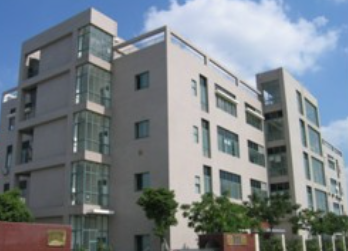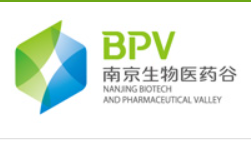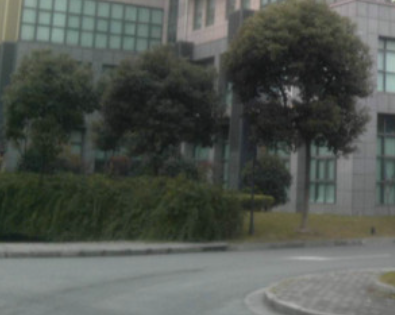醇通过酯的保护一般用在糖化学中较为多见,一般主要通过乙酰基、苯甲酰基和特戊酰基等。乙酰基保护也常常用于天然产物结构鉴定中羟基衍生化。一般上乙酰基方法较多,其中用乙酸酐在吡啶中引入乙酰基最为常用,由于该方法不能乙酰化位阻较大的叔醇,要想在叔醇引入乙酰基需要加入酰化催化剂(DMAP, 4-PPY)等,有时对位阻特别大的即使加入酰化催化剂(DMAP, 4-PPY)也无效时,可以考虑通过Lewis酸催化,Procopiou P. A.等人报道利用TMSOTf催化位阻较大的叔醇的乙酰化(J. Org. Chem. 1998, 2342),效果要比Ac2O/DMAP体系更好(J. Org. Chem. 1998, 2342)。苯甲酰化的常用方法是BzCl或Bz2O/吡啶。特戊酰化的常用方法是PvCl /吡啶, 0-75℃。这些酰基化对伯醇选择性要大于仲醇,选择性特戊酰基>苯甲酰>乙酰基;有时特戊酰基可化学选择性的上在伯醇上。
一、乙酰化保护羟基示例 (DMAP: J. Org. Chem. 1993, 3791)

Compound 1 (1.38 g, 10 mmol) and Ac2O (0.95 mL, 10 mmol) in CH2Cl2(30 mL) were treated with Et3N (2 mL, 10 mmol) and DMAP (122 mg, 1mmol) at 20oC, and the mixture was stirred for 4 d. The mixture was diluted with CH2Cl2and washed with 2M HCl,NaHCO3, H2O, dried, and chromatographed on silica geleluting with ethyl acetate-cyclohexane (1:3, 1:1 to give the diactate (2) (500mg, 22%), the O-aryl acetate (3) (705 mg, 39%), and the O-alkyl acetate (4) (54mg, 3%).
二、 苯甲酰化保护羟基示例( J.Org.Chem. 1981, 46, 5252)

To a solution of1 (0.94 g. 2.9 mmol) in pyridine (20 ml), benzoylchloride (1.26 g, 9 mmole) wasadded with stirring and ice-cooling. Stirring was continued overnight at room temperature. The mixture was poured intoice-water and extracted with benzene. Thebenzene extract was washed with water, driedand evaporated to leave a faint yellow caramel (l.62 g), which was triturated with i-PrOH to form crystals. These were recrystallized from i-PrOH togive colourless plates, m.p. 106-107.5oC, yield 1.31 g (85%).
三、 特戊酰基保护羟基示例 (J.Am.Chem.Soc. 1980,102,7962)

The triol 1 (3.24 g, 20 mmol) is dissolved in pyridine(20 mL) and dry didhloromethane (20 mL) is added. To the cold (0oC) and stirredsolution under argon is added dropwise over a period of 30 min., pivaloylchloride (2.48 mL, 20 mmol). The coolingis then removed and the mixture is stirred at room temperature for 14h. Concentrated followed by azeotropic removalof pyridine (toluene) gives a syrup which is purified by flash columnchromatography on silica gel (50% ether in petroleum ether) yield 2 as acolorless oil, yield 4.43g,(90%).
四、 乙酸酯脱保护示例 (J.Am.Chem.Soc. 1972, 94, 8613)

A mixture of 1 (1.59 g, 6.0 mmol) and K2CO3 (2 g, 14.3 mmol) in MeOH (5 mL) and water(3 mL) was stirred at room temperature for 12 h. The mixture was concentrated in vacuo to a volumeof 3.5 mL and extracted with CH2Cl2 (25 mL ´3). The extract was dried over MgSO4and concentrated in vacuo to afford 21.13 g (85%).
五、苯甲酸酯脱保示例 ( J.Org.Chem. 1981, 46, 5252)

Dibenzoate 1 (500 mg, 0.9 mmol) was added to a solution of NaOH (250 mg, 62mmol) in MeOH (35 mL) and the resulting mixture was stirred at room temp for 50min. After evaporation of MeOH in vacuoand addition of water, the solid separated was extracted with benzene-AcOEt. The organic extract was washed with water,dried and the solvent was removed. Theresidue was chromatographed on silica gel to give a colorless caramel 2, yield360 mg (90%).
六、特戊酸酯脱保护示例 (J.Am.Chem.Soc. 1990,112,3693)

A solution of 136 mg (0.3 mmol) of 1 in 20 mL of MeOH was hydrogenated at atmospheric pressureover 40 mg of 5% Pd/BaCO3 for 24 h at room temperature. The mixture was filtered using a Celite pad,and the filtrate was evaporated. Theresulting colorless glass was dissolved in 10 mL of MeOH and stirred with 49 mg(0.9 mmol) of NaOMe for 20 h at room temperature, during which time white crystalsseparated. These were filtered andwashed well with MeOH to give 66 mg of 2. The filtrate was neutralized with HOAc and concentrated, and the residuewas purified by preparative TLC (developed using the upper phase of EtOAc/n-PrOH/H2O,4:1:2). Recrystallization of this material from MeOH/95% EtOH gave anadditional 18 mg for a total yield of 84 mg (80%) of 2.
本文非原创内容,版权归原作者所有。







